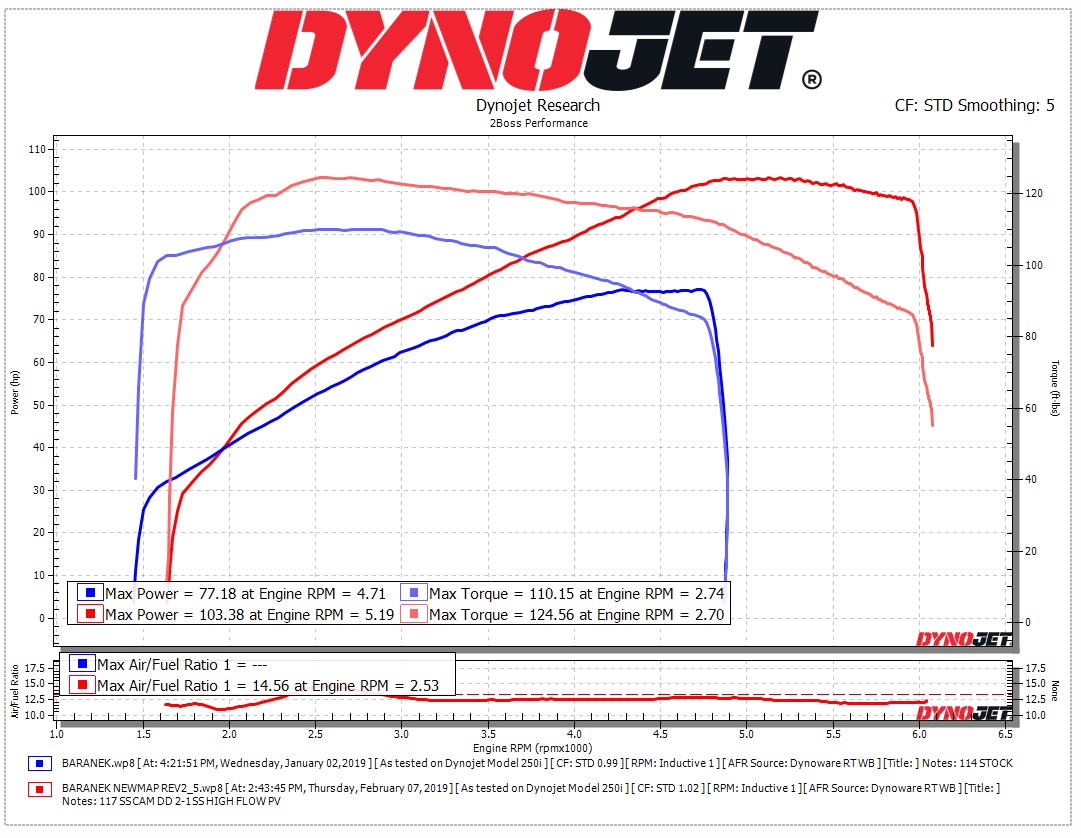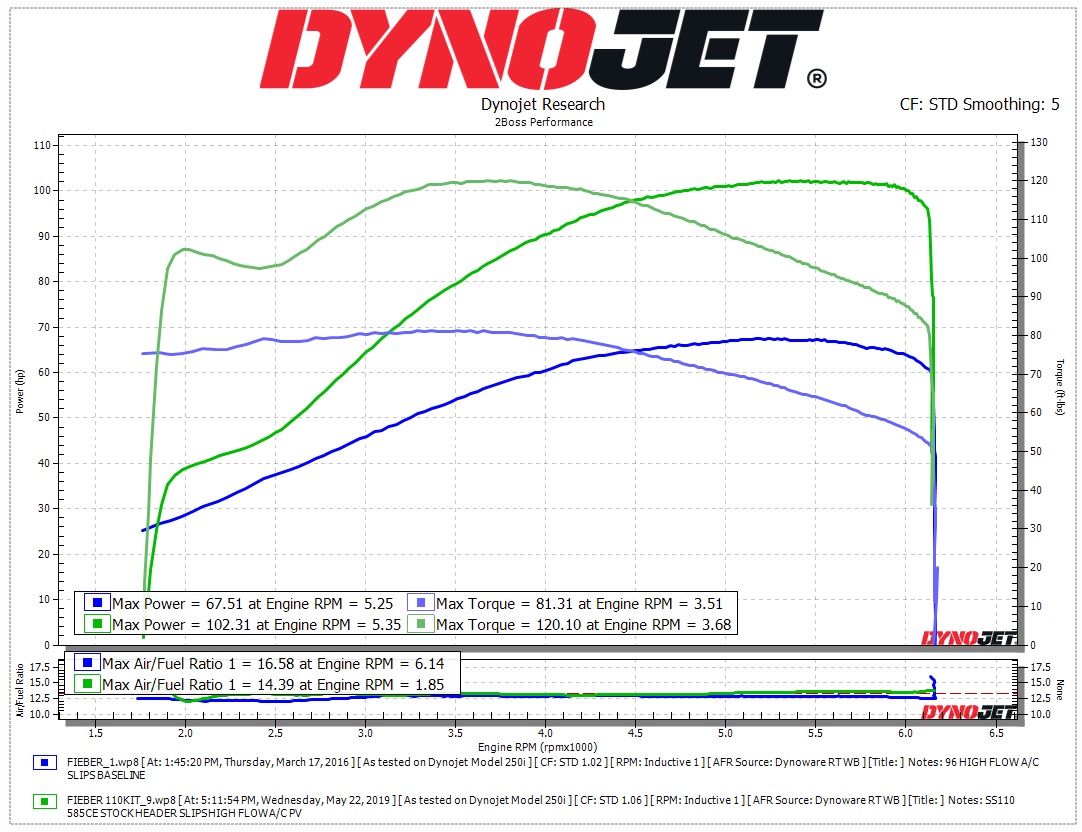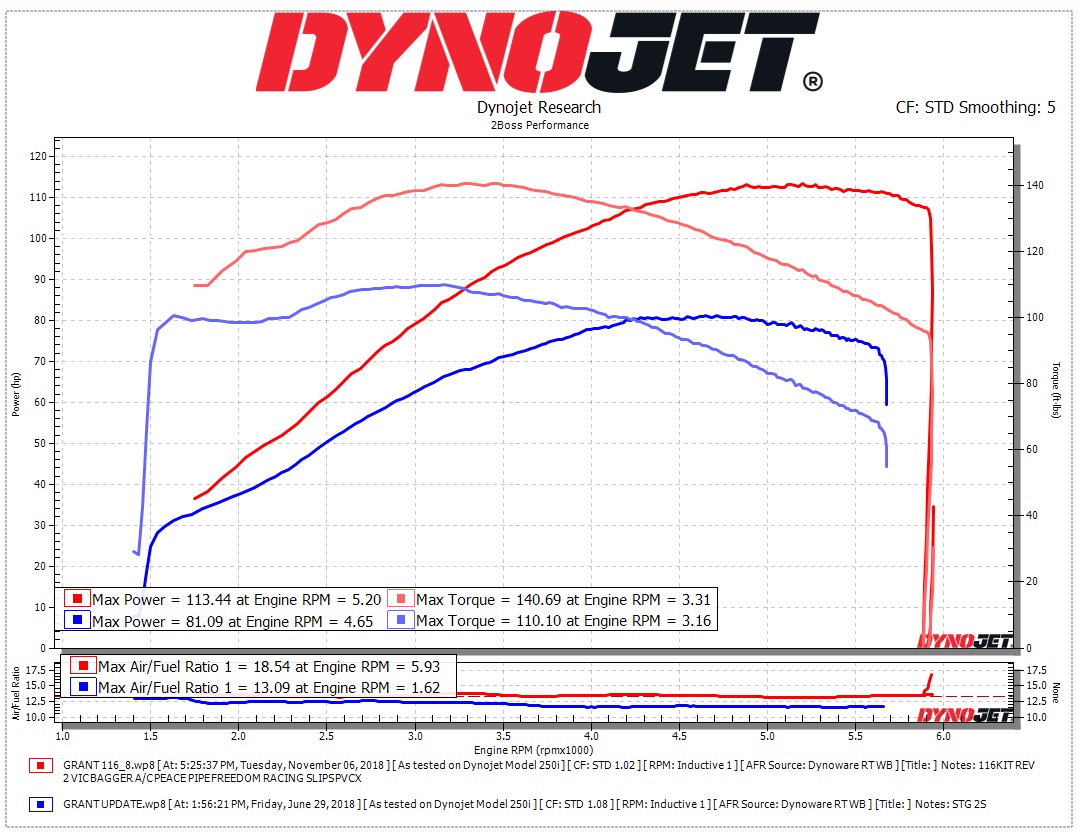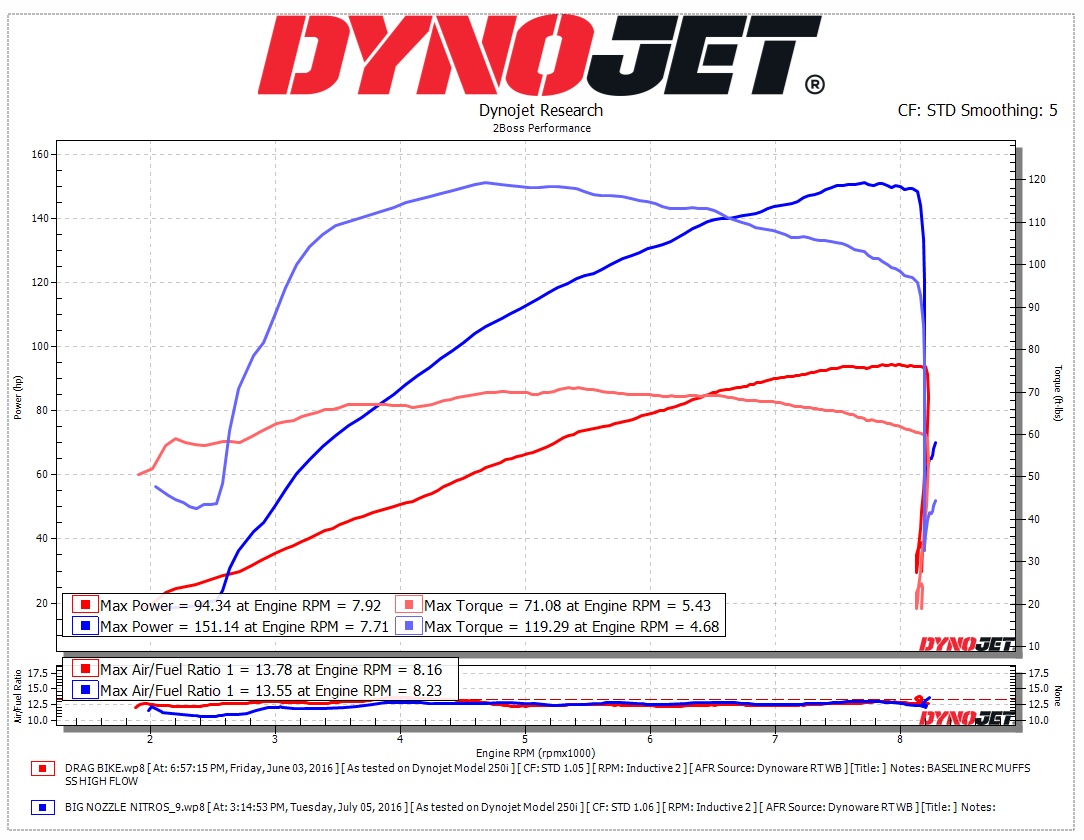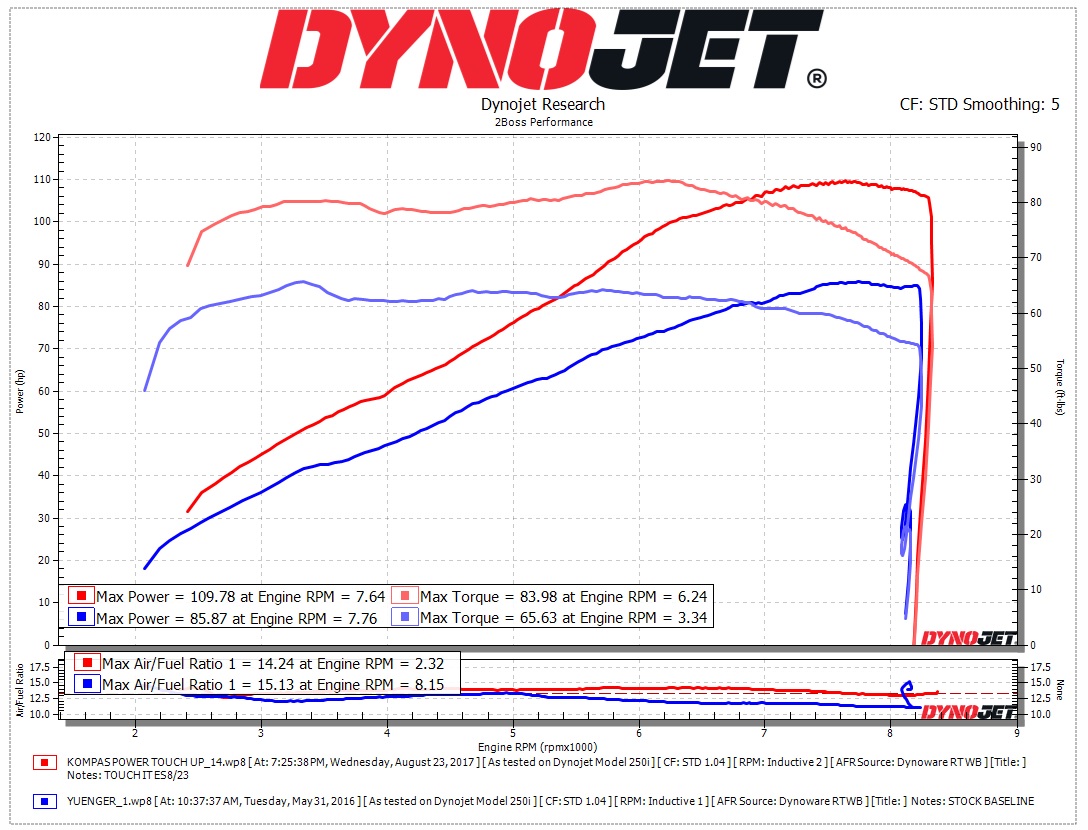Dyno Tuning
What is Dyno Tuning?
Learn The Basics!
What is a dyno anyway? A dyno, short for dynamometer, is a device for measuring horsepower, torque, and force. The power produced by an engine can be calculated simultaneously by measuring rotational speed or RPM. We use a dyno not only to calculate horsepower and torque but to monitor the way your bike is running. The dyno uses a very heavy drum that the rear wheel turns to simulate driving down the road. The health and performance of your engine are monitored as we ride it on the dyno, as we read something called your AFR or Air fuel ratio. This ratio must be at a certain level for proper performance and fuel economy. To adjust this ratio, you need a tuner! Here are a couple of different options that we have determined over the years to be the best out there. Not only will the dynamometer provide us with a horsepower and torque number, but it will also tell us how your clutch is holding up if your speedometer and tachometer are in proper calibration and a good look at your final drive condition.
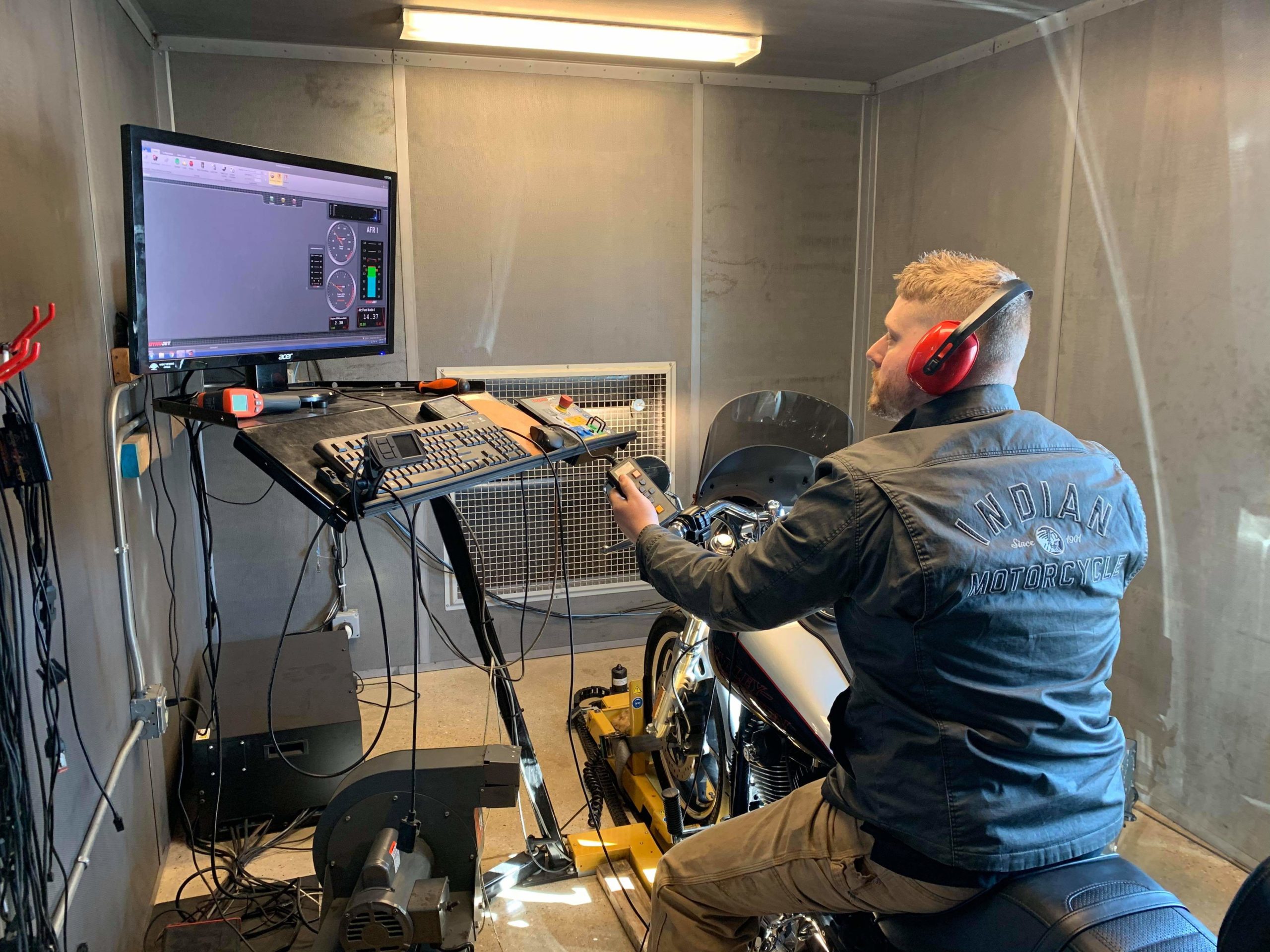
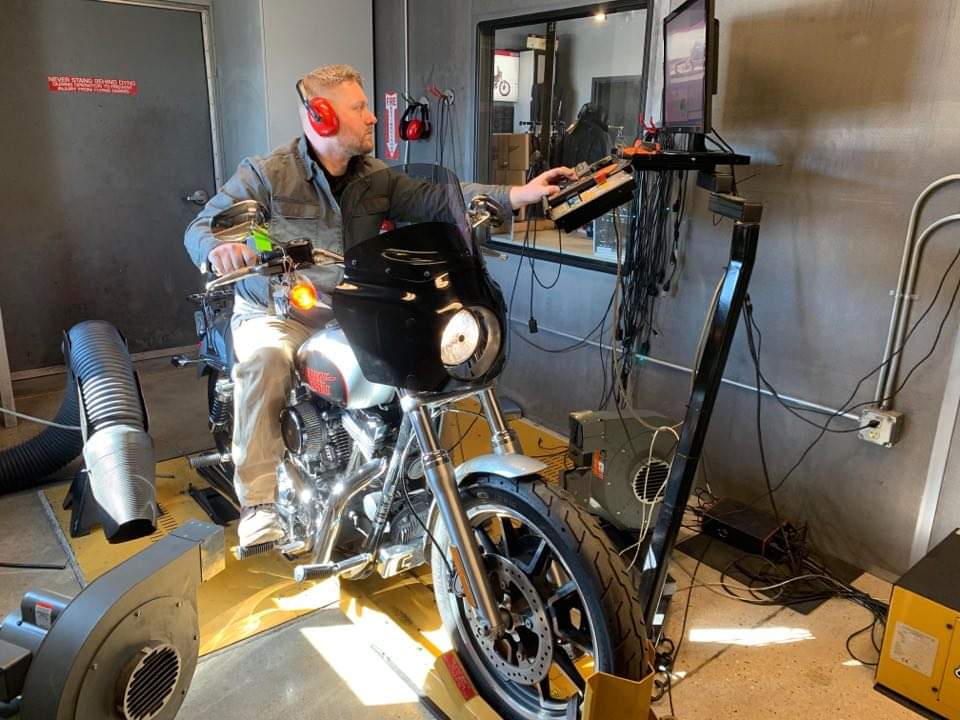
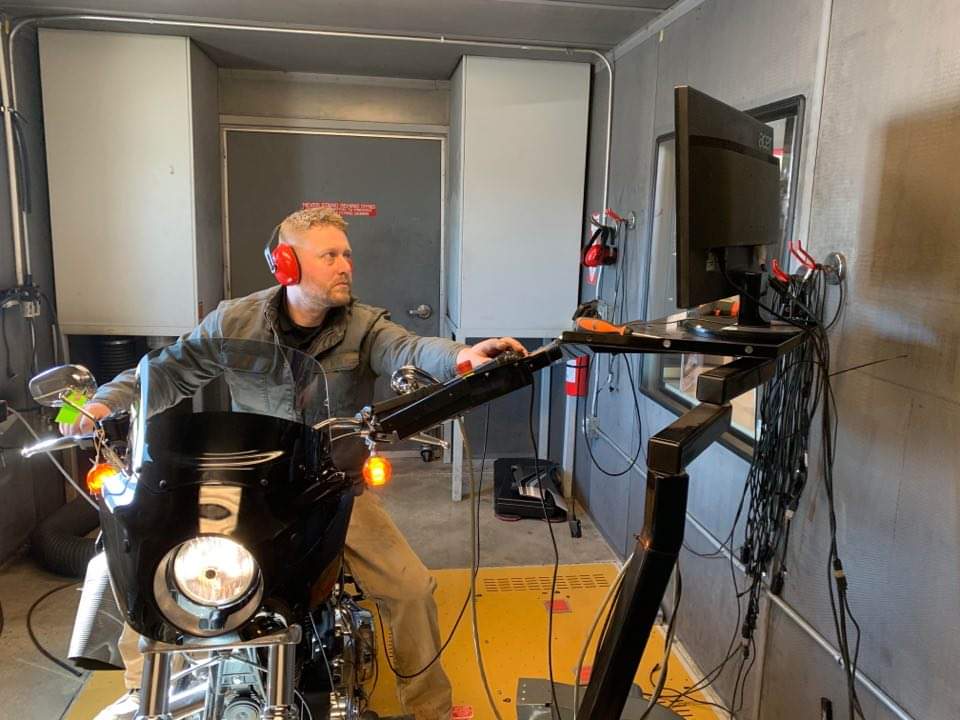
Tuning – EFI (Electronic Fuel Injection)
Depending on whether you have an Indian, Harley-Davidson, or a Royal Enfield, we prefer Dyno jet Research. Power commander has been a great option for over two decades for almost all models. It remains a great option as an affordable way to tune your bike. This system is what’s called an overlay or “piggyback” system. It utilizes a unit that will be installed onto your bike and plugs in-line from your bikes ECU to all of the sensors. This allows you to alter the AFR, and in some cases the timing, to achieve the best performance of your cycle. Even a bike in stock trim can be improved with a tune!
Another option (our preferred) is to use what’s called a Dynojet Power vision. This as of currently is only available for use on Indian (2014-current) and Harley-Davidson (2002-current) motorcycles. This has far more tuning capabilities compared to a PCV (power commander 3-4-5). Another benefit to allowing access to more parameters to adjust in the bike’s computer is that it simply uses the bikes factory ecu and re-writes it with modified settings. Once you unplug it, there are no extra wires or boxes remaining on your motorcycle. Power vision allows many positives including retaining usage of existing narrowband 02 sensors, changing throttle progression (on the fly by wire models), adjusting a variety of timing settings, adjusting rev limiters, removing speed limiters, and much more. The most current version of Powervision is named Powervision 3 and uses a licensed program.
Due to the very complex nature of tuning Indian Motorcycles, we highly recommend that you bring your motorcycle to us when using Powervision tuning. There has been a lot of knowledge that has had to have been acquired on building a database for these bikes. Many companies do not have as much training and time behind the screen, working on tuning these complex machines. Simply missing a few areas on the map can cause a very poorly running machine. This includes Harley as well, although more people have been using Powervision for much longer on that platform, and there is more support out there for them. We pride ourselves on creating an excellent map tailored for you and your bike. If your performance accessories do not function well together, we will be forward with you in discussing the best options to do so. If you have any questions please feel free to call and pick our brains on tuning and how it will transform your riding experience!
Tuners We Use:
Dynojet Power Commander 3-5
Dynojet Power Vision
Dynojet Power Vision CX
Dynojet Power Vision 3
Screaming Eagle Race Tuner
Screaming Eagle Street Tuner
Screaming Eagle Pro Tuner
TTS-Mastertune
S&S Protune 2
Thundermax
PowerTronic R-tune
Techno-Research
Dyna-Tech
Dyna-Tech Ignition Modules
V&H Fuel Pack
*If you don’t see the tuner you have on this list and would like us to tune your bike, we would be glad to try and help you out! We have tuned various other miscellaneous tuners in the past with success.
Licensing
When using a Powervision 3 (or traditional Powervision on your Harley) you will pay for a license that will allow our tuning module to communicate with your bike. You will not receive a physical tuner when doing this, although at an additional cost you can purchase one. Once the license is purchased and applied to your motorcycle, it is married forever to that VIN. This does not mean that you are locked to us as a tuning center. Your map may be edited by anyone with access to Powervision software. If you’d like the software, it is even available to download for free, although we don’t recommend you alter your map after it has been professionally tuned. If you are worried about tuning locations you can check on Dynojet website for locations of certified tuning centers, which we certainly are one of them!
Carburated?
If you still have a carburetor that’s ok! We like carbs! Performing a tune on a Carbed motor is much different then a fuel injected one. Instead of making a few keystrokes on the computer we need to physically change your jet size, needle/position, float level, etc… We will work on the most popular carbs including HD CV, Mikuni, and S&S. Making adjustments to your carb is critical to having a good running bike. Certain fuels are attributed to causing carbs to become plugged and leak. Cleaning of them is also important and may be required before tuning. Also, timing adjustments may be made if need be, pending adjustable ignition modules.
Let's Do This!
So you bought your tuner and it’s paired to your bike, now what? The absolute best way to proceed is to get your bike here and allow us to get it on the dyno! We will make your bike run the way that it should have from the factory. Any performance modifications that you have done will not make a big difference unless you tell the computer to compensate for the changes. In most cases modifying your bike without making a tuning change will negatively affect your performance, and can potentially be dangerous to the health of your engine.
When you schedule your appointment with us for a tune, we will discuss more in-depth as to your riding style, what kind of fuel you will most commonly run, and other variables to best suit the tune to your needs. The tuning process can take anywhere from 2-6 hours dependent on the package. For a commonly seen package, you will be near the lower side and more aggressive complex builds at the higher end.
A less preferred/desirable way to apply a tune to your motorcycle may be done remotely or through e-mails. This requires the user to be fairly competent using computers and must feel comfortable downloading maps to and from their data port. Also, this procedure will not be available when using the most cost-effective and safest version of Powervision licensing.
Temperature also plays a large factor in tuning; therefore, we always try to tune when the weather permits. Ideal tuning temps range from 40-80 degrees F. Tuning can be performed outside of these ranges, but will not provide the best outcome in our opinion. Carbureted bikes especially must adhere to this range, but EFI bikes have a higher tolerance for variation as many sensors control fueling and other parameters.

Graphs
An Indian factory calibration is ok and works fine but if you want to extract the most possible performance as well as improve driveability, simply adding a powervision3 will increase tremendously. Here is an example of an accessory installed 116” kit with a factory calibration, compared to after it has been tuned. More fuel equates to a cooler-running engine and in this case substantial power increases.
Tuning newer Harley-Davidsons with the M8 engine has proven to be a powerful machine. This particular 2019 114ci M8 was brand new off the showroom floor when he brought it to us for some performance upgrades. A simple drop-in cam, exhaust system, and a tune yielded a very strong increase in the midrange and top-end power.
A common engine package we perform here is the S&S Cycle 110 big bore kit. This is a common result of a 96in twin cam that will come in. We always perform a preliminary run to see where your bike sits at, power-wise before we start on any upgrades to show final gains. This 96in twin-cam got the bump to the S&S 110” kit with the excellent performing S&S 585EZ start cam. Add a Powervision license and a tune by our master tuner, and make your bike a blast to ride! Over 35hp gains and nearly 40ft lbs. of torque overstock.
We use many different tuner options here. This S&S 143” needed some adjustment. Here is a before and after graph after tuning with TTS Mastertune.
An excellent example of an Indian Motorcycle stg 3 kit being improved upon even more by 2 Boss Performance. This customer was coming off of a stg 2 kit and went to a 116”. As if the 116 wasn’t enough power we added a few extra touches including a different intake system, our ported heads, and a few other proprietary modifications brought this RM Elite to over 140ft lbs!
Scouts have proven to be incredibly durable. We had a regular Scout 1133 for our “shop bike”. This bike was abused at the drag strip, turned into an ice bike, and finally a flat track bike. During its life as a drag bike, we added add nitrous system and a tuner and managed to exceed 150hp on a bone stock motor. Hundreds of passes using the nitrous with a correct tune and ZERO failures. The only weak point was the clutch, and that problem was quickly rectified with a Barnett clutch. Here is a pass we made on the dyno comparing it to a stock Scout.
Also for the Indian Scout, we offer a 1300 big bore kit for the regular Scout and the Scout Sixty. Here is a graph showing a factory Scout against the bbk. This power level is achievable with just slip on mufflers and a tune.


